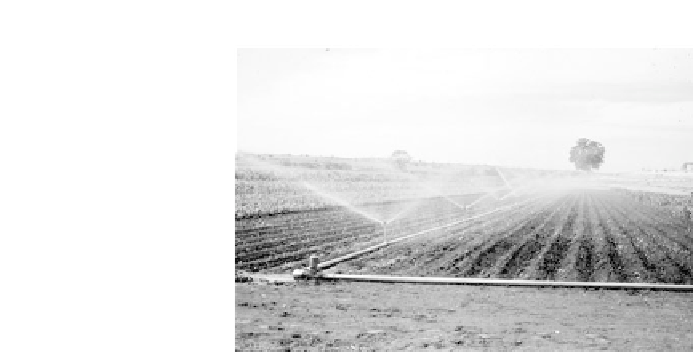Agriculture Reference
In-Depth Information
Figure
10.23.
Sprinkler irrigation in Mexico.
areas where the cost of irrigation water is very high. Even in regions where water cost is
not high, use of drip irrigation gives higher, and more consistent, yields.
Basic drip irrigation systems are relatively simple and inexpensive. Some
farmers make their own systems from materials found in local stores. An advantage
of drip irrigation is the low volume of water used, better yields, less disease caused
by high humidity, and the application of liquid fertilizers with the water. Once
the system is installed, it needs minimal attention. In the greenhouse tomatoes
shown in Figure 10.24 daily harvest does not need to be stopped because of wet
soil. The system may be left on for several days or turned on only as needed
by the crop.
Disadvantages of drip irrigation are the expense of the pump, water lines, and
individual plant emitters. Installation may be tedious and time consuming. Individual
emitters may clog, stopping water flow to a plant. When an emitter becomes
clogged, the only solution is usually to replace the entire assembly. This can become
expensive on large systems. As a preventive measure, most drip irrigation systems
have elaborate filters to prevent particles from entering the irrigation lines.
10.16
VACCINES AND MEDICINES
A fact of life is that all animals get sick, just like people. The most damaging illnesses
are due to bacterial infections, parasites, and insects. Sometimes the illness is so brief
that the farmer doesn't notice it. Occasionally a sudden illness will kill an animal over-
night. Some illnesses or infections are mild and long term, reducing weight gain or milk
production. The majority of animals that pass through a farm are there for less than 1
year before they are sold. From the farmer's point of view the animal is an investment
that needs to be protected until sold.
Treatment of animals can be classed as preventive or curative. Although preven-
tion is less costly than curing a problem, it is a fact that most small farmers in the








